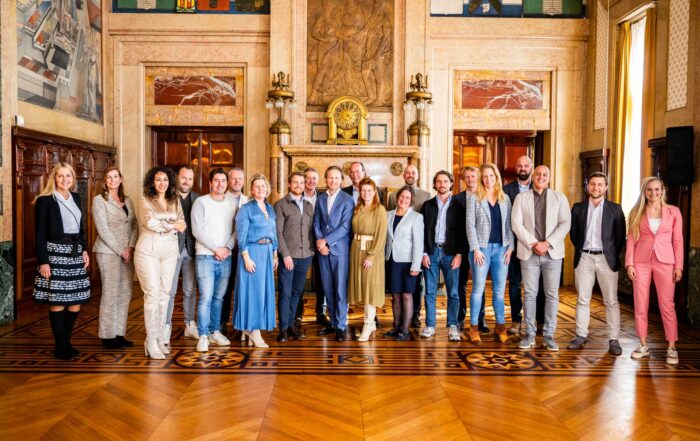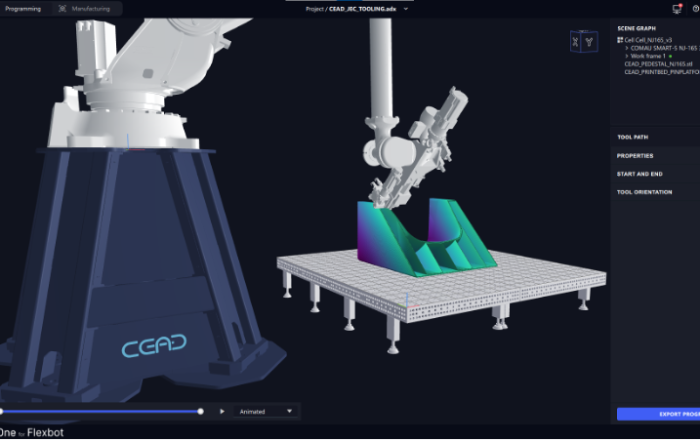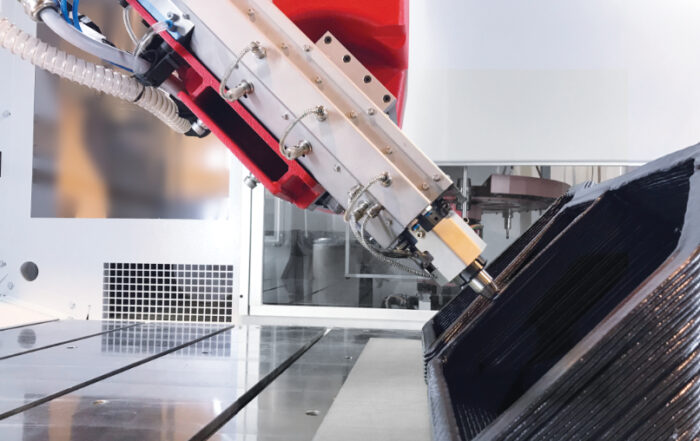When it comes to implementing a new technology, involving employees during the adoption process is essential. While our large format 3D printing solutions focus on automation, people are still a crucial element. With new technology, new skills may be required, and identifying the appropriate profiles is essential. We help our customers understand the steps that are required to ensure a successful implementation.
In this article we describe the staff that you need to start with large format 3D printing. CEAD co-founder and CEO Lucas Janssen delves into this subject in the video embedded.
Designers, slicers and operators
To work with new technologies, you will need individuals with specific skills. To start, you need designers who can create designs that are well-suited to the technology. Designing for additive manufacturing handles different guidelines than designing for traditional manufacturing.
Additionally, programmers or slicers are needed to translate the design into a G-code through software like AdaOne for Flexbot, Siemens NX and Ai Build.
Finally, operators that use the machines are required to use the machines. Besides operating the machine, operators also take care of maintenance and trouble shooting of the hardware.
The way in which these profiles are translated in practice differ per organisation. There are companies that find individuals who can handle all three roles, while others already have the roles filled internally. The requirements vary depending on the company and the machine pool they have.

Background profile for LFAM applicants
In CEAD’s experience, graduates from practical schools up to applied science universities are well-equipped to work with this technology. They have learned how to use digital skills and design for manufacturing methods.
What is also really important, is that people tend to enjoy working with this technology because it’s still very hands-on, and they can bring their computer designs to life the next day. As Haddy’s CEO John Rogers stated: “It’s incredibly motivating to see how many skateboards a high school student can print at night when they’re done with their robotic printing for the day.”
Training staff for robotic 3D printing
At CEAD, we help our customers make the right choices for their needs. Our training programs allow different people from a company to attend various elements of the training. We emphasize a long-term partnership with our customers and provide training sessions to new operators who join the company. We even invite designers and engineers to come to Delft to learn how to work with the technology and feel and touch materials.
If you have questions about the right staff for large format 3D printing, or would like to inquire more information about our 3D printing solutions, please feel free to reach out to our specialists.
Continue reading on large format additive manufacturing
Three groundbreaking world conquerors nominated for 39th edition Rotterdam Entrepreneur Award
This article was originally written in Dutch, click to read the original version in DutchCEAD,Van Donge & De Roo and Hollandia Services are the finalists of the Rotterdam Entrepreneur Award 2024. The nominees for the [...]
What staff do you need for large format additive manufacturing (LFAM)?
When it comes to implementing a new technology, involving employees during the adoption process is essential. While our large format 3D printing solutions focus on automation, people are still a crucial element. With new [...]
3D Printing in boat manufacturing
In recent years, the Netherlands has become one of the trailblazers in maritime technology, specifically with its adoption of large format 3D printing in boat manufacturing. This innovative approach to shipbuilding transforms the traditional [...]
CEAD and ADAXIS Integration Redefines Efficiency in Robotic Large Format 3D Printing
JEC World Paris, 5th March, 2024 - CEAD, frontrunner in robotic large format 3D printing solutions, is thrilled to announce a pivotal collaboration with ADAXIS, a rapidly fast-growing robotics software company. This strategic partnership aims to strengthen [...]
Large format 3D printing with PIPG
If you are looking for a cost-effective, easy to use and beautiful printing material for your large format 3D printer, PIPG is the right material. PIPG, or Post-Industrial PET-G, is an innovative recycled material [...]
3D printing with pellet extruders versus with filament
In all processes of industrial manufacturing, efficiency is key, and speed is paramount. Industrial 3D printing helps companies to improve and speed up their manufacturing processes by rapid prototyping, unlocking fast customization and by [...]





